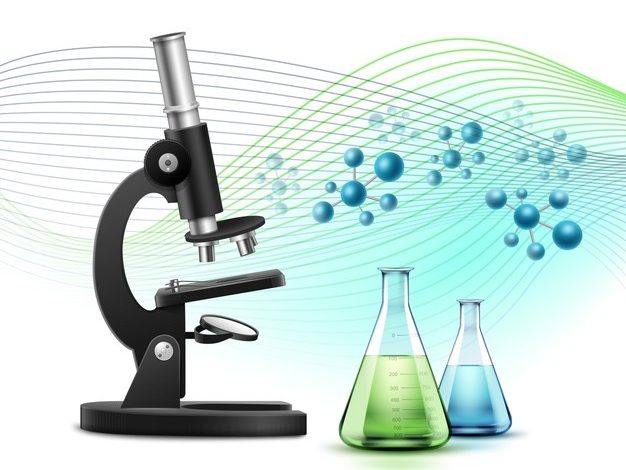EN 14476 – antiviral test on sanitizers and disinfectants

There are several types of tests available, and most of the tests come under two categories: antibacterial and antiviral testing. Each testing has a different method, and EN 14476 test is one of the antiviral testing methods. And all these methods will have unique specifications. Each test method is for a particular type of customer product. And the antibacterial testing has real-life bacterial strains, and the antiviral testing will have real-life virus strains. These are the basics of testing methods that are available in laboratories.
Every test method has its own set of organisms that are useful in the testing process. The organisms refer to the real-life bacterias and viruses in the strain forms. For every test, all the bacterias and viruses will have their unique environment setup to grow faster. The test methods will have additional special chemicals to make the testing process simple and effective. These are the basic features of both the testing methods.
Testing methods
There are various testing methods available for both antibacterial and antiviral testing. The testings methods like ASTME2149, AATCC-100, JISZ2801, JISL1902, EN1276 come under antibacterial testing methods, and the tests like ISO21702, ISO18184, EN 14476 test are antiviral testing methods. Each of these testing methods will have its specific uses. And each one will have its set of organisms to react to, and these are the various types of testing methods.
These test methods will have different processing techniques and procedures for the customer products. The laboratory will determine the test by the type of the customer product. If the product is porous plastic, it has a specific test. If the product is commercial chemicals like cleaning agents or disinfectants, it will have a separate trial. Likewise, each product will have different types of test methods. By these steps, each product will get its test method.
Antiviral testing
Antiviral testing is the test type that deals with virus strains. In this method, EN 14476 is one of the antiviral test methods. It has various viruses like SARS CoV-2, Beta coronavirus (43) (ATCC VR-1558), Human covid virus (229E) (ATTCC VR-740), Influenza A (H1N1) (ATCC VR-1469), Influenza A (H3N2) (ATCC VR-1679). And even some other viruses like poliovirus, Adenovirus, Murine Norovirus. These are the primary organisms that are available for antivirus testing.
These antiviral testings can handle up to seven viruses and even more. This antivirus testing will take about three to four weeks to complete its test process. In antivirus testing methods, the EN 14476 test is a quantitative suspension method that will help calculate and evaluate the quality of the viruses in the customer product. Many antiviral and antibacterial coats are available for every virus and bacteria to prevent the effects. These are the basic features of antivirus testing.
EN 14476 test process
This antiviral test involves several numbers of steps. In each phase, specific chemical components will be an add-on to make the solution more stable and suitable for the testing process. The customer product will be the first component in the test because all other chemicals support the reaction. The reaction needs particular time and temperature to move further, so laboratories will create an environment that suits the process. the test processes are
- Sample preparation
- Inoculation
- Incubation
- Neutralisation
- Process I
- Process II
These are the steps involved in the EN 14476 antiviral testing, and each of these processes will be unique, and their primary goal is to support and prepare the sample of customer product for the reaction with the virus strains. To complete this full process, it takes about 2 to 3 weeks entirely. And this test is basically for testing sanitisers and other disinfectants with quantitative analysis.
Sample preparation
The sample preparation deals with interfering substances and customer products. This process requires one clean and dry test tube. Name the test tube as A and add 1ml of interfering substance and 8ml of customer product, then let the test tube be free from physical and chemical disturbances. It will prepare the solution for the following chemical reaction with exact needs. These are the process of sample preparation.
Inoculation
In this step, test tube A gets 1ml of test virus suspension. This substance will also be a part of the test tube A solution. This new compound should mix well with the existing solution to further perfect the testing process. Adding this suspension will make the solution more stable and help to check the proper reaction with the virus and other similar strains. These are the features of injection.
Incubation
Like all other test methods, this EN 14476 test method also has an incubation process. This incubation process needs a specific time and temperature to prepare the compound. This incubation will isolate the solution from other reactions and provide a different and appropriate environment to develop for the following step. The time for this process is known as Contact time. These are the features of the Incubation step in this antiviral test.
Neutralisation
A new test tube is necessary for conducting the process. After completing the contact time, take test tube A and take 0.5ml of solution for test tube B. Test tube B needs a cold place for this process. It requires a tub filled with crushed ice, then places test tube B on the top, add 0.5ml of solution from test tube A. and to that add the maintenance medium of about 4.5ml. The ice will neutralise the compound of test tube A.
Process I
In the first phase of the process, create several dilutions of virus strains in different containers. Each solution should have other various counts. Change the virus solutions into the well plate and develop cells into 96 various wells for developing the confluency. After reaching the required confluency add about 100ul of the virus to all the wells. These steps will be the first phase of this test process. All the viruses will grow better with a particular time and temperature.
Process II
In the multiple-well plate, add all the different dilutions of the virus and make them into ten other rows. Name each of the wells with the whole virus to no virus count. Then examine the wells for the accurate result of the virus damages or the reaction with the customer product. Then the CPE of each well will be calculated for the final result, and to make it as a chart to know about the result value.
Output of the EN 14476 test
All the CPE values from the wells will graph the product’s exact growth and efficacy rate. And the two sides of the chart denote the virus dilution count and the count of infected wells. From the output of the EN 14476 test, it can show the perfect estimated dilution for one TCID, which makes it more attractive and efficient. All the test methods’ outcomes will explain the product’s capacity and damage by viruses or bacteria.
Virus testing methods
The main work of all virus testing methods is to check the ability of the product to withstand the damage power of various viruses. Each virus will have a different attacking style, and all the antivirus coats and compounds should be strong enough to fight against the attack of these viruses. These are the basic features of these virus testing methods.
Also read:10 Lab Safety Equipment You Must Know





